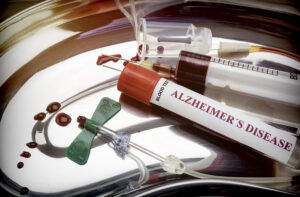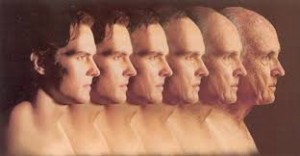A recent study explained that a new blood test for Alzheimer’s disease is very reliable. Specifically, it determined with 96% accuracy elevated levels of beta amyloid. It also accurately identified tau protein, another Alzheimer’s marker, with 97%. The original research study was published at JAMA Neurology.
Significance of tau protein and beta amyloid for Alzheimer’s diagnosis
Both beta amyloid and tau protein play an important role in the functioning of nerve cells in the central nervous system. But people who develop Alzheimer’s disease experience a lot of beta amyloid deposits in their brains. In addition, there is an overproduction of tau protein as well with insoluble filaments that accumulate as neurofibrillary tangles.
Conventional ways to diagnose Alzheimer’s disease
Alzheimer’s disease conventionally is diagnosed by a PET scan. However, this involves some radiation exposure and costs over $5,000. Next a spinal tap allows the physician to send a sample of cerebrospinal fluid to the lab for analysis. This test gives detailed information, but people are often reluctant to get this invasive test. These tests are expensive and not covered by insurance.
The preventive neurologist Dr. Richard Isaacson is the director of research at the Institute for Neurodegenerative Diseases in Florida. He was not involved in the study. Dr. Isaacson said: “Having a blood test like this can also help democratize access for people and just make it easier for our health care system to more proactively manage the tsunami of dementia risk that our society is facing. This is the key to unlock the door into the field of Alzheimer’s prevention and preventive neurology.”
Home test
The Alzheimer’s disease test was introduced in the US in May of 2022 under the name “AD-Detect™ Test” by Quest. Again, this test is not covered by insurance. The cost is about 399.00 USD plus a 13.00 USD physician service fee.
Research background of the home test
Researchers performed a clinical trial that correlated the blood test, phosphorylated tau (p-tau), with PET scanning of the brain. The blood test was also correlated with lumbar punctures and analysis of cerebrospinal fluid tests. A total of 786 participants (504 females and 282 males) were tested 3 times over 5.22 years. The researchers found that phosphorylated tau (p-tau) was a specific blood biomarker to detect Alzheimer’s disease. It was very sensitive and accurate in terms of correlation with PET scans and cerebrospinal fluid tests. The investigators concluded that the Alzheimer blood test is a practical solution for diagnosing dementia and Alzheimer’s disease early. It will also be a good tool to monitor, whether any future Alzheimer’s drug is effective in controlling the disease process.
Discussion regarding the new blood test for Alzheimer’s disease
For years there was no easy way for physicians to diagnose Alzheimer’s disease. The alternatives were to order the expensive PET scan or the invasive lumbar puncture for a cerebrospinal fluid test. Now with the new blood test for Alzheimer’s disease the physician can screen for Alzheimer’s based on clinical suspicion. The blood test can also tell whether any lifestyle changes have slowed down the clinical course or not. Another important aspect is that this test allows an earlier diagnosis of dementia.
Difficult to interpret tests and test results in other forms of dementia
About 20% of the study participants had blood test results, which were not clear. In a case like this the doctor would order further testing with imaging or a spinal tap to diagnose the condition accurately. Other forms of dementia like vascular dementia or Lewy body dementia were negative with this Alzheimer’s test, which added to the specificity of the test. Also, this test picks up Alzheimer’s about 10 years before symptom onset, so it is an early diagnostic test.
Conclusion
One of the clinical tests for Alzheimer’s disease is to test for recent memory loss. But with the new phosphorylated tau (p-tau) blood test physicians can now objectively diagnose Alzheimer’s much earlier, even when the person has no symptoms yet. Researchers validated the test in 786 participants (504 females and 282 males). They were tested 3 times over 5.22 years. Researchers also did PET scans and spinal tabs for analysis of cerebrospinal fluid in the same participants to validate the blood test. There was a 96% accuracy for elevated levels of beta amyloid. It also accurately identified tau protein, another Alzheimer’s marker with 97%. There is now a reliable Alzheimer’s blood test, which helps the physician in the management of patients with Alzheimer’s disease.







